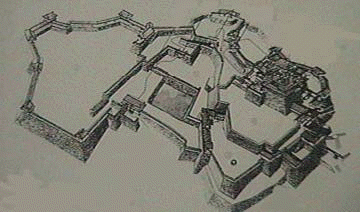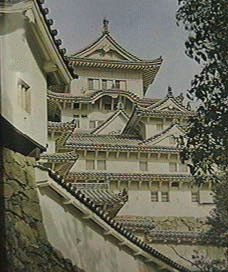CASTLE BUILDING TECHNIQUES AND DESIGNS

A revolution in Japanese architecture came in 1576, with the building of
Azuchi-jo
by Oda Nobunaga, which saw castle building become nationally widespread. The Japanese castle is quite different to its European counterpart in physical appearance, and at first glance appears to be very roughly built and designed. In actual fact, an extreme amount of architectural precision was taken to construct it, reflecting the Japanese trait of striving to accomplish highly refined work. The Japanese castle though differing in some respects also had features similar to its European counterpart, despite the fact that the Japanese had little contact with the west at the time.
Although differing in size, scale and method of construction, the castles both had the same original role. That is, in times of war the castle in both areas was used for defensive purposes. Both used moats and walls as their main means of defence. Certain structures were common such as
sama,
ishiotoshi and
masugata.
Difference between the castles lay in construction techniques. Siege was the main method of aggression against European castles. This was rarely used in Japan and thus the walls of European castles are somewhat stronger than those of Japanese castles. The equipment used in European sieges, such as cannons, were of limited availability in Japan. The cannon was introduced to Japan in 1576, but was never used effectively against the castle, due to the low levels of casting and gunnery skill available in Japan at the time.( Hinago Japanese Castles p15)
Castle building boomed at different times in each civilisation. The 11th Century saw a boom in castle building in Europe whereas the Japanese boom started much later in the 16th Century. (Hinago p16)
The booms also differed in size. Castle construction in Japan occurred on a much larger scale than that of Europe. It became a national industry for Japan during the late 1500's and early 1600's. Although differing in time, the castles were allies in the fact that they shared architectural features and eventually also sociopolitical features. The function of both castles becoming more of a political one than a defensive one over time. (Hinago p17)

DEFENSIVE FEATURES OF JAPANESE CASTLES

DECORATIVE FEATURES OF JAPANESE CASTLES
NEXT PAGE
















